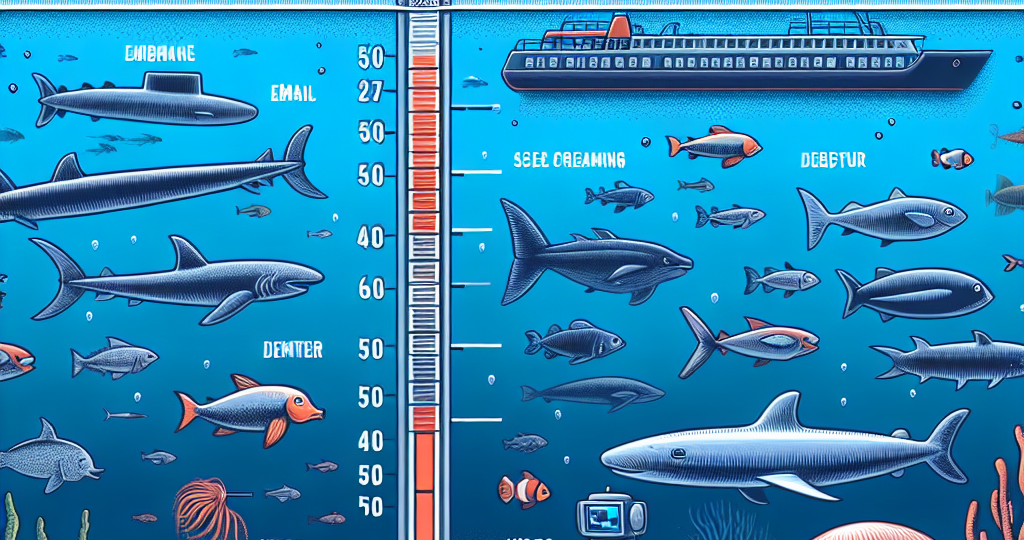Exploring the Depths of DSL Internet Speeds: A Comprehensive Comparison
September 12, 2024 | by Javier Linn

In today’s fast-paced world, having reliable and speedy internet is essential for staying connected and getting things done. DSL, or Digital Subscriber Line, is a popular choice for many households looking for a balance between affordability and performance. However, not all DSL internet providers offer the same speeds, leaving consumers wondering which option is the best for their needs. In this comprehensive comparison, we will dive deep into the world of DSL internet speeds, exploring the various providers and packages available to help you make an informed decision on which option is right for you. Let’s embark on a journey to uncover the depths of DSL internet speeds and discover the best fit for your online lifestyle.
Understanding DSL Internet Speeds

DSL, or Digital Subscriber Line, internet speeds refer to the rate at which data is transmitted over a DSL connection. It is crucial for users to have a clear understanding of DSL internet speeds to make informed decisions when choosing a service provider.
Definition of DSL Internet Speeds
DSL internet speeds are the rates at which data can be uploaded or downloaded over a DSL connection. These speeds are typically measured in bits per second (bps) or megabits per second (Mbps). The higher the number of bits or megabits per second, the faster the internet connection.
How DSL Speed is Measured
DSL internet speeds are measured using tools that calculate the amount of data that can be transmitted in a specific amount of time. This measurement is crucial for determining the overall performance of an internet connection. Internet service providers often advertise the maximum download and upload speeds available to customers.
Factors Influencing DSL Internet Speeds
Several factors can influence DSL internet speeds, including:
– Distance from the DSL provider’s central office: The farther a user is located from the central office, the slower the DSL speeds may be.
– Network congestion: High levels of network traffic can lead to slower internet speeds for DSL users.
– Quality of wiring: Older or damaged wiring can impact the stability and speed of a DSL connection.
– Service package: Different DSL service packages offer varying speeds, with higher-tier packages providing faster internet speeds.
Types of DSL Internet Connections
Asymmetric DSL (ADSL)
Asymmetric DSL (ADSL) is a type of DSL internet connection that is characterized by different download and upload speeds. In ADSL connections, the download speed is typically faster than the upload speed, catering to the typical internet usage patterns of most users. This asymmetry in speed allocation is designed to prioritize the faster downloading of content such as web pages, videos, and other media, which aligns with the predominant consumer behavior of accessing online information.
Characteristics of ADSL
- Asymmetrical Speeds: ADSL connections offer faster download speeds compared to upload speeds, making it suitable for activities like streaming, browsing, and downloading large files.
- Frequency Division Multiplexing: ADSL utilizes Frequency Division Multiplexing (FDM) to separate voice and data signals, allowing users to make phone calls while browsing the internet simultaneously.
- Distance Sensitivity: The speed and quality of an ADSL connection can be affected by the distance between the user’s location and the provider’s central office. Longer distances may result in slower speeds and reduced reliability.
Speed Variations in ADSL
- Download Speeds: ADSL download speeds can range from 1 to 15 Mbps, depending on the service plan and provider. Higher download speeds enable faster access to online content and smoother streaming experiences.
- Upload Speeds: In contrast, ADSL upload speeds are typically lower, ranging from 128 Kbps to 1 Mbps. This asymmetry in speed allocation may impact activities like uploading large files or video conferencing, where higher upload speeds are beneficial.
In conclusion, ADSL offers asymmetrical speeds that cater to the download-centric needs of most users, with varying speeds based on factors such as distance from the provider and service plan chosen. Understanding the characteristics and speed variations of ADSL can help consumers make informed decisions when selecting an internet service that aligns with their online activities and usage patterns.
Symmetric DSL (SDSL)
Types of DSL Internet Connections
Symmetric DSL (SDSL) is a type of digital subscriber line technology that provides equal upload and download speeds to users, making it ideal for businesses and individuals who require consistent performance for activities like video conferencing, online gaming, and large file transfers.
Features of SDSL:
– SDSL offers symmetrical speeds, meaning that the upload and download speeds are the same. This is in contrast to asynchronous DSL, where the upload speed is typically slower than the download speed.
– SDSL provides dedicated bandwidth, ensuring that users have a consistent and reliable connection without fluctuations in speed during peak usage times.
– This type of DSL is well-suited for tasks that require high upload speeds, such as video streaming, cloud computing, and VoIP services.
Speed consistency in SDSL:
– One of the key advantages of SDSL is its ability to maintain consistent speeds for both uploading and downloading data. This reliability is crucial for businesses that rely on a stable internet connection to carry out their day-to-day operations.
– Unlike other types of DSL that may experience fluctuations in speed depending on network congestion or distance from the provider’s central office, SDSL offers a more predictable and stable connection, making it a preferred choice for users who prioritize reliability.
Comparing DSL Speeds with Other Internet Connection Types
When it comes to comparing DSL speeds with other Internet connection types, it’s essential to delve into the specifics of each technology to understand the nuances that impact speed and performance. Let’s explore how DSL stacks up against cable, fiber optic, and satellite Internet speeds:
DSL vs. Cable Internet speeds
- DSL Speeds: DSL, or Digital Subscriber Line, operates over traditional copper phone lines and typically offers download speeds ranging from 1 to 100 Mbps, depending on the provider and infrastructure.
- Cable Internet Speeds: Cable Internet, which utilizes coaxial cables to deliver connectivity, tends to offer faster speeds compared to DSL, with download speeds commonly ranging from 25 to 300 Mbps. This is due to the higher bandwidth capacity of coaxial cables.
In comparing DSL and cable Internet speeds, it’s evident that cable Internet generally outperforms DSL in terms of raw speed. However, factors such as network congestion and the number of users sharing the connection can also impact actual speeds experienced by users.
DSL vs. Fiber Optic Internet speeds
- DSL Speeds: As mentioned earlier, DSL speeds typically range from 1 to 100 Mbps, with variations based on factors like distance from the provider’s central office and the quality of the copper lines.
- Fiber Optic Speeds: Fiber optic Internet, known for its superior performance, can offer blazing-fast speeds that often surpass those of DSL and cable. Fiber connections can deliver speeds starting from 100 Mbps and going up to 1 Gbps or even higher.
Comparing DSL with fiber optic Internet speeds underscores the significant disparity in performance between the two technologies. While DSL may suffice for basic Internet usage, fiber optic connections are preferred for bandwidth-intensive activities like HD streaming, online gaming, and large file downloads due to their unparalleled speed and reliability.
DSL vs. Satellite Internet speeds
- DSL Speeds: DSL speeds, constrained by the limitations of copper wiring, may struggle to deliver consistent performance in remote or rural areas where infrastructure is lacking.
- Satellite Internet Speeds: Satellite Internet, which relies on satellites in orbit to provide connectivity, can offer speeds ranging from 12 to 100 Mbps, making it a viable option for users in underserved regions.
In comparing DSL with satellite Internet speeds, it’s essential to consider factors like latency and data caps that can affect the user experience. While DSL may offer slightly faster speeds in ideal conditions, satellite Internet serves as a lifeline for users in areas where traditional broadband options are scarce.
Factors Impacting DSL Internet Speeds
DSL internet speeds can be influenced by various factors that play a crucial role in determining the overall performance and reliability of the connection. Understanding these factors is essential for users to grasp the nuances of DSL technology and make informed decisions regarding their internet service. Below are the key elements that impact DSL internet speeds:
-
Distance from the provider’s central office: The proximity of a user’s location to the central office of the DSL service provider is a critical factor in determining the speed and stability of the internet connection. As the distance between the central office and the user’s premises increases, the signal strength weakens, leading to slower data transmission speeds. Users located closer to the central office typically experience higher DSL speeds compared to those situated farther away.
-
Quality of copper wiring: The quality and condition of the copper wiring used in the DSL infrastructure can significantly affect the speed and reliability of the internet connection. Older or degraded copper lines may introduce signal interference, line noise, and signal attenuation, leading to slower speeds and potential connection issues. In contrast, well-maintained and high-quality copper wiring can help preserve signal integrity and support faster data transfer rates for DSL users.
-
Network congestion during peak hours: Network congestion, particularly during peak usage hours, can impact DSL internet speeds as multiple users share the same bandwidth capacity within the network. During times of high demand, such as evenings or weekends, the increased traffic load can result in slower speeds and reduced performance for individual users. Network management practices employed by the service provider, along with the overall network infrastructure’s capacity, play a crucial role in mitigating congestion-related speed issues for DSL subscribers.

Tips for Improving DSL Internet Speeds
In the realm of DSL internet speeds, enhancing your connectivity can be a game-changer. Here are some invaluable tips to maximize your DSL internet speeds:
-
Upgrading modem and router
Upgrading your modem and router to newer models that support higher DSL speeds can significantly boost your internet performance. Look for devices that are compatible with the latest DSL technologies to ensure optimal speeds. Additionally, positioning your modem and router in a central location away from obstructions can improve signal strength and enhance speed. -
Filtering phone line interference
Phone line interference can hamper DSL internet speeds, causing disruptions and slowdowns. Installing DSL filters on your phone lines can help eliminate interference from devices like telephones, fax machines, and answering machines. These filters prevent extraneous signals from affecting your internet connection, leading to a more stable and faster DSL experience. -
Regularly monitoring and optimizing network settings

Keeping a close eye on your network settings and making necessary adjustments can fine-tune your DSL internet speeds. Check for any bandwidth-hogging devices on your network and limit their usage during peak hours to ensure equitable distribution of bandwidth. Additionally, optimizing your DNS settings and clearing cache regularly can enhance browsing speeds and overall internet performance. By staying vigilant and proactive in managing your network settings, you can unlock the full potential of your DSL internet speeds.
Future Prospects for DSL Internet Speeds
DSL technology has seen significant advancements over the years, paving the way for potential speed improvements in the future. These advancements include the development of VDSL (Very High Bitrate Digital Subscriber Line) and G.fast technologies, which have the capability to deliver faster speeds over existing copper telephone lines.
Advancements in DSL Technology
- VDSL technology, such as VDSL2, utilizes advanced modulation techniques to achieve higher data rates compared to traditional ADSL.
- G.fast technology, on the other hand, enables even faster speeds by utilizing higher frequencies and vectoring technology to reduce interference.
Potential Speed Improvements in the Future
As DSL technology continues to evolve, there is a possibility of further speed improvements in the future. Researchers and engineers are exploring ways to enhance the efficiency of existing DSL infrastructure, such as implementing new coding schemes and improving signal processing algorithms.
Competition from Other Internet Connection Types
While DSL technology holds promise for future speed enhancements, it faces stiff competition from other types of internet connections, such as cable, fiber-optic, and wireless networks. These alternative technologies often provide higher speeds and more reliable connections, posing a challenge to the continued dominance of DSL in the broadband market.
FAQs: Comparing DSL Internet speeds
What factors can affect DSL Internet speeds?
Various factors can influence the speed of DSL Internet, including the distance between your home and the nearest telephone exchange, the quality of your copper telephone lines, the number of devices connected to the network, and the overall network traffic in your area. Additionally, the plan you choose from your Internet service provider and the type of DSL technology used can also impact the speed you experience.
How does DSL Internet speed compare to other types of Internet connections?
DSL Internet speeds typically fall in between cable and fiber-optic connections in terms of speed. While DSL speeds can vary depending on your specific location and provider, they generally offer lower speeds than fiber-optic connections but can be comparable to or even faster than some cable Internet plans. It’s essential to consider your specific needs and the availability of different types of connections in your area when comparing Internet speeds.
Can I upgrade my DSL Internet speed if I’m not satisfied with the current performance?
Yes, it is possible to upgrade your DSL Internet speed in some cases. Contact your Internet service provider to inquire about available plans and pricing for higher speed options. Keep in mind that the upgrade may require additional equipment or a technician visit to ensure your connection can support the faster speeds. Be sure to consider any potential costs and contract terms involved in upgrading your DSL Internet speed.
How can I accurately test my DSL Internet speed?
To accurately test your DSL Internet speed, you can use online speed test tools provided by various websites or your Internet service provider. Ensure that no other devices are using the network while conducting the speed test to obtain the most accurate results. It’s also essential to run the test multiple times at different times of the day to get a more comprehensive understanding of your average DSL Internet speed.
Cable Internet vs. DSL Internet
RELATED POSTS
View all

